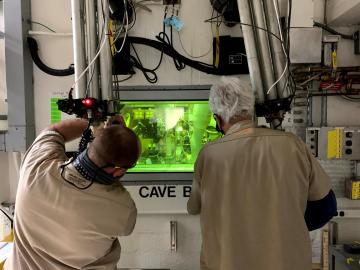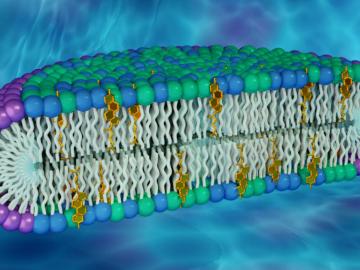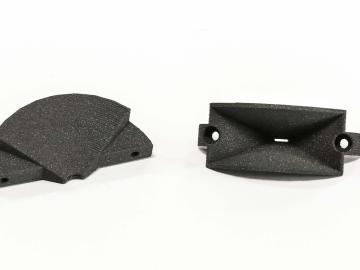
Filter News
Area of Research
- Advanced Manufacturing (3)
- Biological Systems (1)
- Biology and Environment (43)
- Biology and Soft Matter (1)
- Computational Biology (1)
- Computer Science (1)
- Electricity and Smart Grid (1)
- Energy Science (32)
- Functional Materials for Energy (1)
- Fusion and Fission (9)
- Isotopes (21)
- Materials (51)
- Materials for Computing (8)
- National Security (22)
- Neutron Science (64)
- Nuclear Science and Technology (11)
- Quantum information Science (1)
- Supercomputing (61)
News Type
News Topics
- (-) Advanced Reactors (17)
- (-) Artificial Intelligence (85)
- (-) Biomedical (46)
- (-) Cybersecurity (20)
- (-) Fossil Energy (6)
- (-) Frontier (47)
- (-) Isotopes (41)
- (-) Molten Salt (3)
- (-) Nanotechnology (29)
- (-) Neutron Science (95)
- (-) Physics (40)
- (-) Space Exploration (14)
- 3-D Printing/Advanced Manufacturing (73)
- Big Data (49)
- Bioenergy (74)
- Biology (86)
- Biotechnology (25)
- Buildings (37)
- Chemical Sciences (46)
- Clean Water (16)
- Composites (15)
- Computer Science (127)
- Coronavirus (23)
- Critical Materials (6)
- Education (2)
- Emergency (3)
- Energy Storage (47)
- Environment (130)
- Exascale Computing (53)
- Fusion (47)
- Grid (35)
- High-Performance Computing (92)
- Hydropower (6)
- Irradiation (1)
- ITER (5)
- Machine Learning (39)
- Materials (82)
- Materials Science (75)
- Mathematics (8)
- Mercury (7)
- Microelectronics (3)
- Microscopy (31)
- National Security (67)
- Nuclear Energy (79)
- Partnerships (42)
- Polymers (14)
- Quantum Computing (37)
- Quantum Science (52)
- Security (19)
- Simulation (46)
- Software (1)
- Statistics (2)
- Summit (42)
- Transportation (41)
Media Contacts

A new method developed at Oak Ridge National Laboratory proves one effort’s trash is another’s valuable isotope. One of the byproducts of the lab’s national plutonium-238 production program is promethium-147, a rare isotope used in nuclear batteries and to measure the thickness of materials.

Researchers at the Department of Energy’s Oak Ridge National Laboratory and the University of Tennessee are automating the search for new materials to advance solar energy technologies.

Researchers believe that proteins could behave differently in lipid raft environments, compared to non-raft regions in a membrane, but this hypothesis has not been fully evaluated. One reason is that membrane models used to study membrane proteins rarely contain rafts.

On Feb. 18, the world will be watching as NASA’s Perseverance rover makes its final descent into Jezero Crater on the surface of Mars. Mars 2020 is the first NASA mission that uses plutonium-238 produced at the Department of Energy’s Oak Ridge National Laboratory.

Thirty-two Oak Ridge National Laboratory employees were named among teams recognized by former DOE Secretary Dan Brouillette with Secretary’s Honor Awards as he completed his term. Four teams received new awards that reflect DOE responses to the coronavirus pandemic.

The ExOne Company, the global leader in industrial sand and metal 3D printers using binder jetting technology, announced it has reached a commercial license agreement with Oak Ridge National Laboratory to 3D print parts in aluminum-infiltrated boron carbide.

Since the 1930s, scientists have been using particle accelerators to gain insights into the structure of matter and the laws of physics that govern our world.

Brian Damiano, head of the Centrifuge Engineering and Fabrication Section, has been elected fellow of the American Society of Mechanical Engineers.

Marcel Demarteau is director of the Physics Division at the Department of Energy’s Oak Ridge National Laboratory. For topics from nuclear structure to astrophysics, he shapes ORNL’s physics research agenda.

Six scientists at the Department of Energy’s Oak Ridge National Laboratory were named Battelle Distinguished Inventors, in recognition of obtaining 14 or more patents during their careers at the lab.


